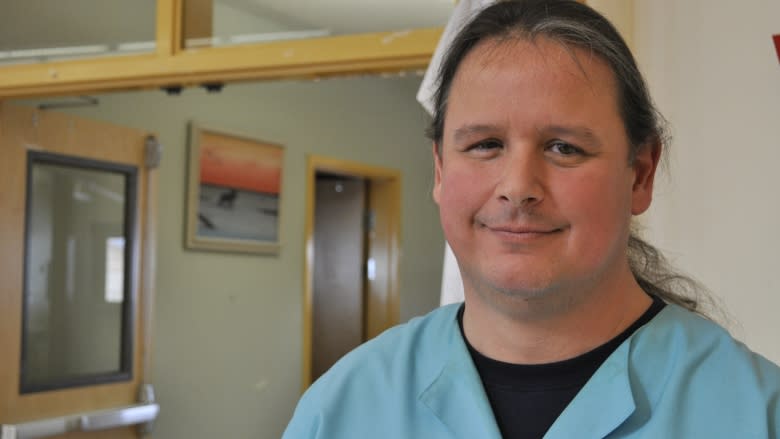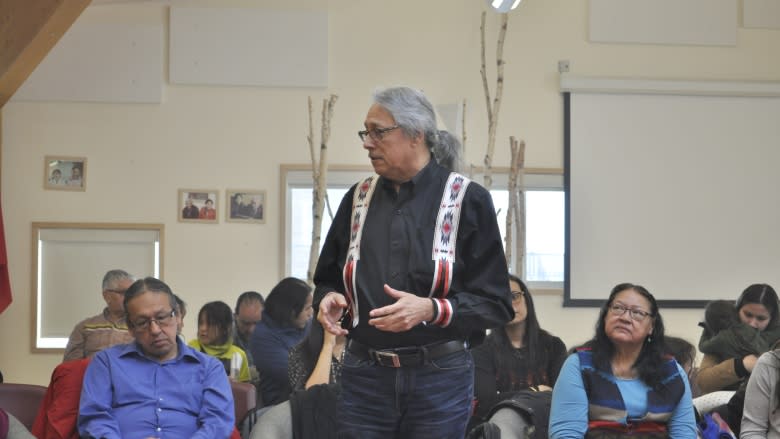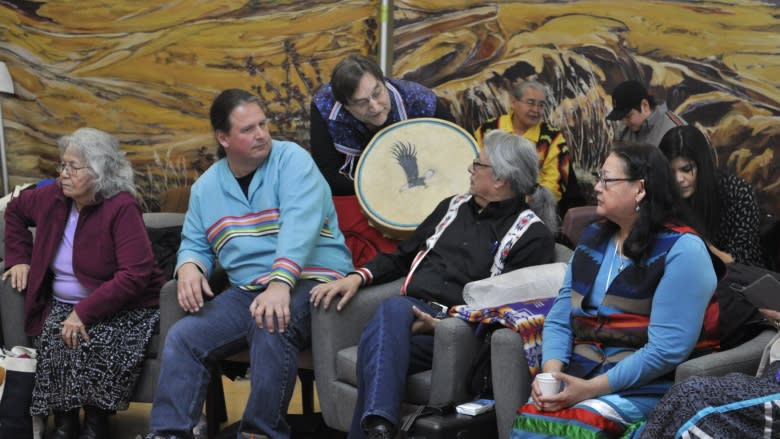'It's mind blowing': How making Aboriginal sacred pipes changed this man's life
In a small, brightly lit room with fewer than 60 people, Troy Fontaine stands out in his sky-blue shirt.
Seeming to know the elders leading the traditional ceremony of the sacred tobacco pipe in Dettah, N.W.T., this weekend, his role is a quiet one.
-
PHOTOS | The people behind the sacred pipe ceremony in Dettah, N.W.T.
Once he's stuffed and lit the pipe — made of black and red stone — he holds it in front of the pipe's caretaker, elder Dave Courchene, who smokes it first. Courchene prays as he uses the pipe, which was commissioned by a group of Canadian elders who are looking to rejuvenate the traditional healing ceremony across the country.
Fontaine continues to help everyone in the room take a turn at smoking or feeling the pipe. It's nearly a metre in length and hard to handle. Fontaine doesn't say much as he concentrates on his duties, but smiles sometimes when watching others.
Fontaine, 49, appears to only be a helper for the ceremony, but it turns out his role is much larger as the creator of that specially made pipe.
He is a sought after pipe carver, a gift believed to be passed on to him from the Spirit. It led him to 24 years of traditional healing, marked this weekend by one of the most important pipes he'll ever make.
Before piping, 'I saw nothing but pain'
At -29 C, Troy Fontaine was living in a teepee on a First Nation in Manitoba.
Without food or water for 48 hours, he was on what's known in some Aboriginal cultures as a vision quest.
After years of drug and alcohol abuse, Fontaine, 25 at the time, decided he wanted to change his life.
That's when an elder advised him to take this vision quest in the teepee in the dead of November to find out what needed to change in his life — and how.
It's when he had the first dream.
"I had this powerful dream about my future and it wasn't bright," Fontaine said.
"What I saw in my future was my death, really. I just saw nothing but pain and suffering. After that vision quest, I quit drinking and using."
That's when he was first introduced to pipe smoking, as a sacred, traditional way to help heal.
"[The elder] started teaching me about prayer and how to use the pipe and he said, 'I want you to smoke this pipe every day.'"
That was the beginning of Fontaine's relationship with the sacred pipe, ultimately leading to his role today.
Now it's 24 years later and Fontaine is known as "the pipe carver" to many people across Canada and the U.S.
"I'm still trying to process it all," Fontaine said.
"Everything's led up to this [ceremony] now ... I keep saying that I'm just blown away that it's all interconnected and how it's all unfolding."
Pipe carving: 'How do I do that?'
Fontaine recalls the second dream he had, leading him directly to pipe carving.
He asked the same elder about a sacred pipe he envisioned one night. That elder advised him he needed to make that pipe.
"How do I do that?" Fontaine recalls asking himself.
He had never carved something, let alone a sacred pipe that was supposed to help heal him from years of drinking and using drugs.
So he asked around and got some quick pointers from other pipe carvers he knew, and that was it.
"So off I went and experimented," Fontaine said.
"Made a really ugly one the first time ... actually, a couple guys laughed at it, but that didn't stop me. So I kept going."
And he still hasn't stopped.
Fontaine says he can't count the number of pipes he's made.
"There are ceremonies and gatherings where I look around and I go, 'Oh, hey, that looks familiar ... Sometimes I see 10 or 11 pipes [that I've made] in one place in one time.
"And it's all people that I know and I know they're doing good work, so it brings a lot of pride. You know, I feel good that these things that I've created are out there helping create change for our people."




